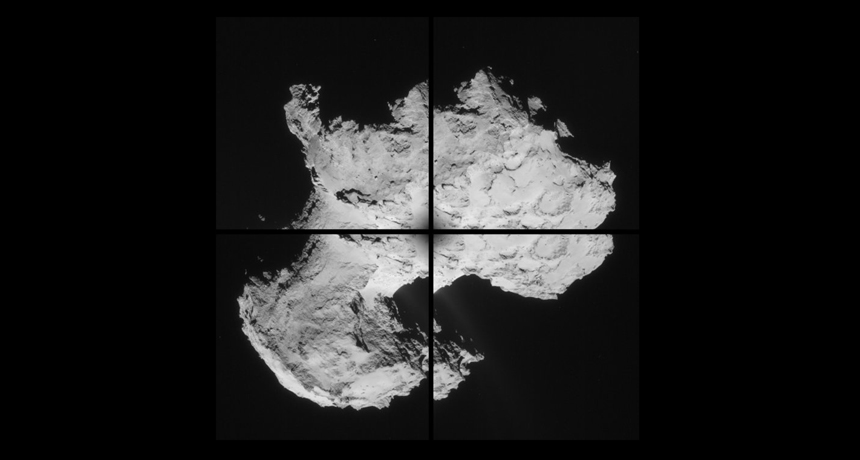Rosetta’s comet shows few signs of surface ice

This mosaic of images of Comet 67P/Churyumov-Gerasimenko released on September 2 show faint signs of a jet spouting from the comet's inner neck region.
NAVCAM/Rosetta/ESA

This mosaic of images of Comet 67P/Churyumov-Gerasimenko released on September 2 show faint signs of a jet spouting from the comet's inner neck region.
NAVCAM/Rosetta/ESA